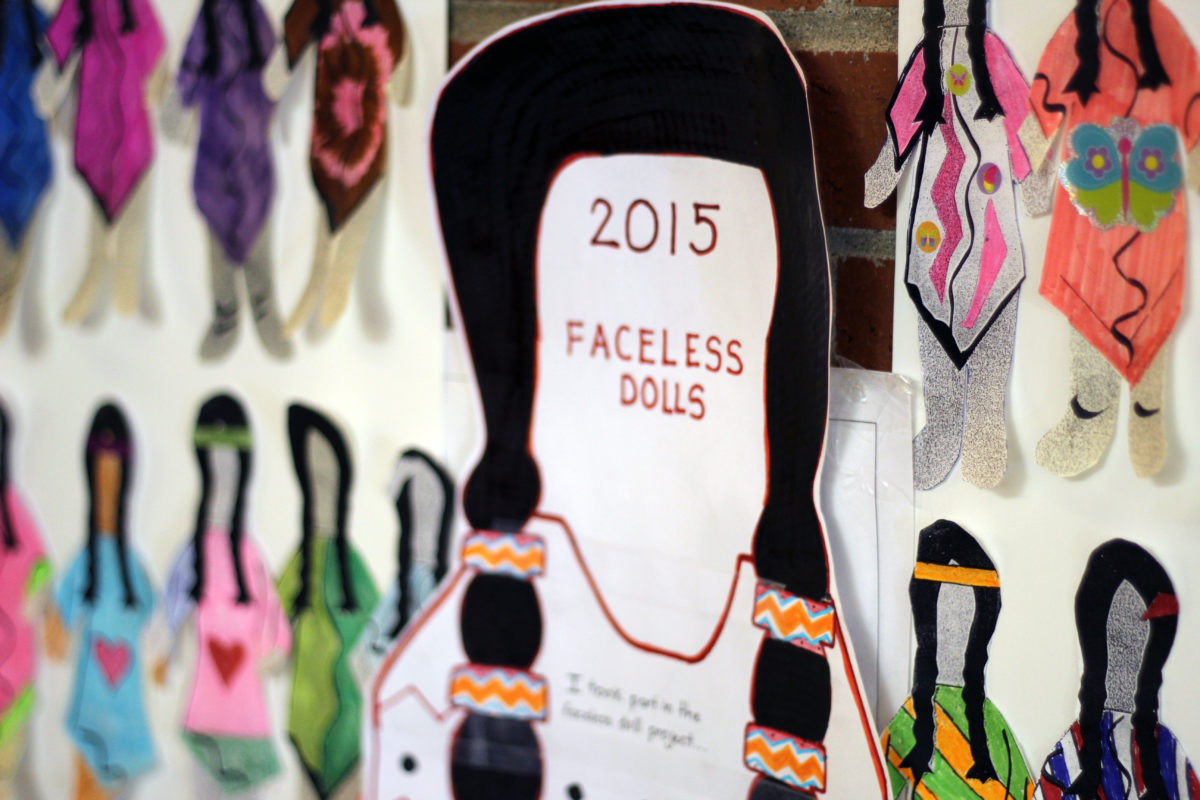St. Thomas students have found a unique way to raise awareness of the 1,200 aboriginal women who have been murdered or remain missing since 1980.

Students in two criminology courses are working to create a display of 1,200 paper dolls in Brian Mulroney Hall to represent these women. They have more than 700 made.
Criminology professor Josephine Savarese teaches both classes. She says this project is important for students.
“I wanted to bring a visual to students, and also something they could do to contribute to public awareness,” she said.
Savarese’s classes aren’t the only groups involved with the Faceless Dolls Project. Aboriginal women’s groups and universities nation-wide have projects of their own. As far as she knows, her classes are the only ones in Atlantic Canada participating.
Although Savarese’s classes are using paper, other groups use more elaborate material. Savarese’s students make the dolls in class, so alterations had to be made.
“It’s typically done with felt, and we altered it so that we can achieve a significant number of dolls in the time period that we had,” said Savarese.
Scissors, markers and glue aren’t normally found in a criminology class. Savarese was aware of this and was unsure what students’ reactions would be.
“I was concerned about [students being engaged with the project],” said Savarese. “Those who stayed in the classes were committed and excited about the project.”
Third-year student Tyson Hovey is one of Savarese’s students. He thinks projects like this will force the government to take a serious look at the issue of murdered and missing aboriginal women.
“I think it certainly puts pressure on the government to at least take a look at this,” he said. “Because it’s bringing a lot of attention not just in the university but outside of the classroom.”
Correction: The print version of this story incorrectly states 12,000 aboriginal Canadian women have gone missing or murdered since 1980. That number is actually 1,200.
